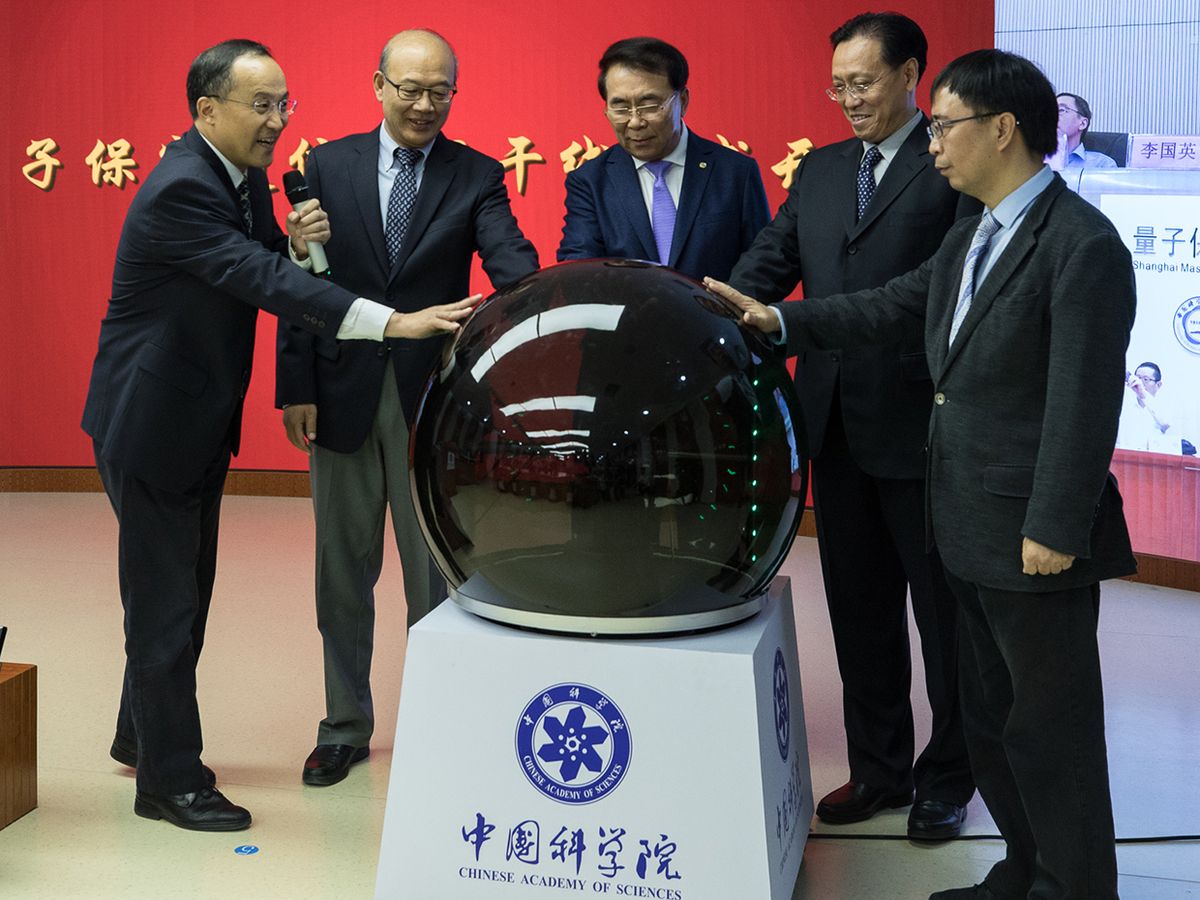Chinese researchers have completed a practical demonstration of quantum key distribution, showing that it’s possible to encrypt and send data between two locations in a highly secure way.
The announcement proves that the fiber-satellite quantum communications network that China has spent more than 10 years building can generate and distribute cryptographic keys for real-world purposes. These keys should render communications impenetrable to hackers—at least in principle.
“It’s a spectacular demonstration,” says Charles Clark, a fellow with the Joint Quantum Institute at the University of Maryland. “It’s the first time that there’s been long-distance communication using quantum key encryption in something like a videoconferencing application.”
In the demonstration on Friday, a team from the Chinese Academy of Sciences led by physicist Jian-Wei Pan generated a secure key from a quantum satellite called Micius that launched in August 2016. The satellite has special equipment onboard to produce photons suspended in superposition, single particles of light whose peculiar properties can be used to generate a random sequence of bits.
That string of bits then serves as a sort of secret code with which two parties can encrypt and decrypt messages, through a scheme known as one-time pad. The main security advantage of such a system is that the principles of quantum mechanics make it impossible for outsiders to read a message without altering it. “The quantum communication itself offers a way for unconditional secure key exchange,” Pan says.
Quantum encryption has long been an alluring theoretical possibility, but executing key distribution on an international scale has required substantial investment. China has built five ground stations to communicate with Micius. These connect to a 2,000-kilometer fiber optic backbone between Beijing and Shanghai (completed in 2016). Together they form the world’s first space-ground quantum network.

For the demo, Pan’s team first established a connection and generated a secure key between a ground station in Xinglong and the Micius satellite as it passed overhead, orbiting about 500 kilometers above Earth. From Xinglong, the key traveled through the fiber to Beijing, where the Chinese Academy of Sciences is based.
Next, the Chinese team waited for Micius to pass over Vienna, where their collaborators at the Austria Academy of Sciences were waiting to also receive the key from the satellite. Then, with the keys in hand, the groups initiated a video conference and used those keys to encrypt the video data through a standard VPN protocol.
“It’s an important demonstration that you can, in fact, communicate between two points on earth using quantum cryptography,” Clark says.
The video call lasted about a half hour. Pan says President Chunli Bai of the Chinese Academy of Sciences in Beijing began the call by greeting President Anton Zeilinger of the Austria Academy of Sciences in Vienna, and the two spoke about future collaborations. “The video quality is excellent,” Pan adds.
In these early stages, quantum keys will likely be used to first protect extremely sensitive and critical data. The bandwidth of quantum networks remains limited, and data rates are relatively slow. Pan says the key was transmitted at a rate of 200 kilobytes per orbit between Micius and the Xinglong station, and 50 kB per orbit between the satellite and the Vienna ground station. The real-time distribution of the key exchange with Xinglong occurred at 5 kB/s.
Quantum encryption, through its use of one-time pad, relies on a radically different strategy than public key cryptography, in which a sender uses a public string of digits used to encrypt a message, and the recipient uses a private string to decrypt it. In public key cryptography, each string is generated through complex algorithms that could potentially be cracked by quantum computers, so stronger encryption methods are needed for long-term data security.
China plans to carry out future demonstrations of their quantum communications capabilities with Italy, Germany, Russia, and Singapore.



